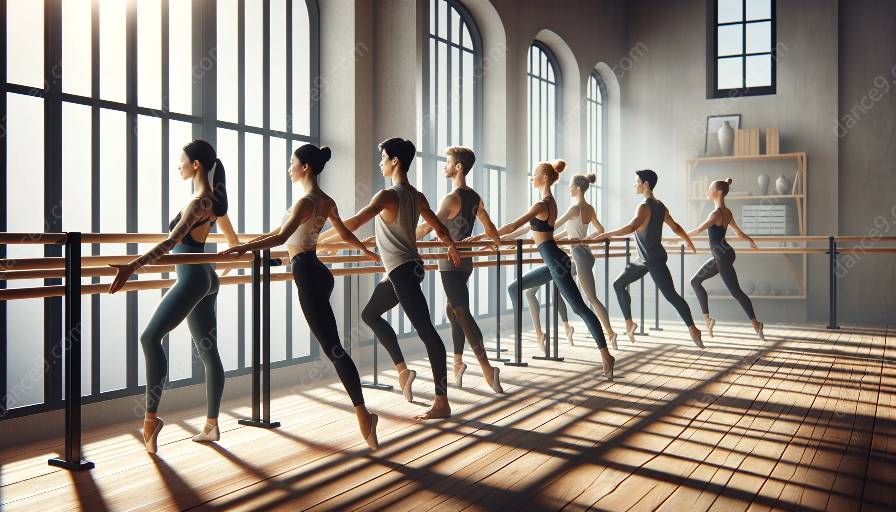Barre and dance classes offer unique and effective ways to enhance physical fitness, coordination, and mental well-being. The cross-disciplinary applications of these activities are vast and diverse, contributing to both physical and artistic development. In this comprehensive guide, explore how barre and dance complement each other and how they can impact various aspects of life.
The Intersection of Barre and Dance
While barre classes primarily focus on ballet-inspired movements and exercises that promote strength, flexibility, and posture, dance classes encompass a wide range of styles such as ballet, jazz, hip-hop, contemporary, and more. The intersection of barre and dance lies in their shared emphasis on body awareness, grace, coordination, and musicality. Both activities encourage participants to connect with their bodies, align their movements with music, and express themselves artistically.
Physical Benefits of Barre and Dance
Barre and dance classes offer numerous physical benefits, including improved strength, flexibility, balance, and cardiovascular endurance. Barre workouts typically target specific muscle groups, such as the core, legs, arms, and glutes, using small, controlled movements that engage multiple muscle fibers. Similarly, dance classes provide a full-body workout, enhancing stamina, agility, and overall muscle tone.
Furthermore, the dynamic nature of dance and barre movements helps to enhance coordination, agility, and spatial awareness. Both activities emphasize the importance of proper alignment and posture, which can contribute to injury prevention and improved overall fitness.
Mental Well-being and Artistic Expression
In addition to the physical benefits, barre and dance also play a significant role in promoting mental well-being and artistic expression. Engaging in rhythmic movements and expressive choreography can alleviate stress, boost mood, and enhance cognitive function. The focus required during barre and dance classes can provide an outlet for individuals to channel their emotions and express themselves creatively.
Furthermore, the sense of community and camaraderie fostered in both barre and dance environments can contribute to improved self-confidence, social connections, and a sense of belonging. Participants often find joy and fulfillment in the artistic expression and creative freedom offered by these activities.
Cross-disciplinary Applications
The cross-disciplinary applications of barre and dance extend beyond their individual physical and artistic benefits. These activities have been incorporated into various wellness and therapeutic programs, offering holistic approaches to physical rehabilitation, stress management, and overall well-being.
In rehabilitation settings, barre and dance-based movements are utilized to aid in the recovery and strengthening of specific muscle groups, improve range of motion, and enhance motor skills. The low-impact nature of barre exercises and the expressive movements in dance classes make them accessible to individuals of all ages and fitness levels, providing inclusive opportunities for physical improvement and recovery.
Furthermore, the rhythmic and expressive nature of dance has been integrated into therapeutic interventions for improving emotional well-being, such as dance/movement therapy. This form of therapy utilizes movement as a tool for self-expression, emotional processing, and personal growth, contributing to overall mental wellness.
Complementary Relationship
Barre and dance classes possess a complementary relationship that can enhance the effectiveness and enjoyment of both activities. Integrating barre exercises into dance training regimens can improve strength, stability, and alignment, leading to enhanced performance and injury prevention. Likewise, dancers who engage in barre classes can refine their technique, deepen their understanding of movement mechanics, and develop heightened body awareness.
Conversely, the fluidity and expressive qualities of dance can enrich the movement quality and artistic interpretation of barre exercises, adding an additional layer of creativity and musicality to the practice.
Conclusion
The cross-disciplinary applications of barre and dance classes offer a multifaceted approach to physical fitness, artistic expression, and holistic well-being. Their unique blend of physical and artistic elements contributes to a dynamic and enriching experience that can benefit individuals in various aspects of their lives. Whether utilized for physical conditioning, artistic development, or therapeutic purposes, the intersection of barre and dance presents a wealth of opportunities for personal growth and fulfillment.













































































